Unconventional Cookbooks and Artist Kitchens to Dream About
Recipes for time travel, Georgia O’Keeffe’s herb collection and Monet’s Giverny tile
The best cookbooks, in my opinion, are not about cooking, not really; they're about living. My favorites—the ones I pick up again and again—are lessons on a particular way of being in the world. Full of history and stories, ritual and emotion—how to use your senses, how to feel about food, how to live a full life—they are as transportive as the best travel memoirs. The recipes, it seems, are incidental. Here, four favorites from four very different women. Free from the splatter of sauces, my cherished copies—dog-eared, highlighted and full of notes in the margin—are an endless source of inspiration.
Honey From a Weed: Fasting and Feasting in Tuscany, Catalonia, The Cyclades and Apulia / by Patience Gray, Illustrated by Corrina Sargood*
Something of a renegade cult hero and culinary icon, Gray spent time learning to cook (and live) from the peasants in Puglia, Tuscany, and Naxos, Greece, where she and her marble-sculptor husband moved to be closer to the source. Part personal recipe book (sole served in white wine with muscat grapes, chickpeas, broad beans, quince jams, ewe's cheeses, pigeons, weeds, bilberries and little almond cakes), part travelogue/memoir and part cultural lifestyle manual (an entire chapter dedicated to the spiritual importance of harvesting olives and using a mortar pestle), Honey from a Weed transports to a simpler time and place where fresh herbs are gathered on the side of a mountain; figs are picked early in the morning for jam in earthenware pots; and supper of olives, bread, wine and goat over an open fire is sometimes shared with shepherds. If you’re like me, you’ll want to fashion a life from these pages, not just a meal.
“Poverty rather than wealth gives the good things in life their true significance. Home-made bread rubbed with garlic and sprinkled with olive oil, shared—with a flask of wine—between working people, can be more convivial than any feast. My ambition in drawing in the background to what is being cooked is to restore the meaning.” —Patience Gray
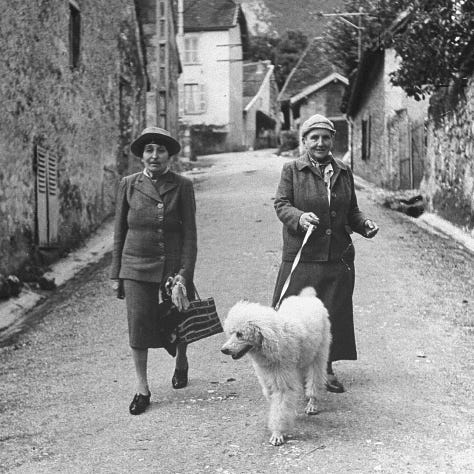
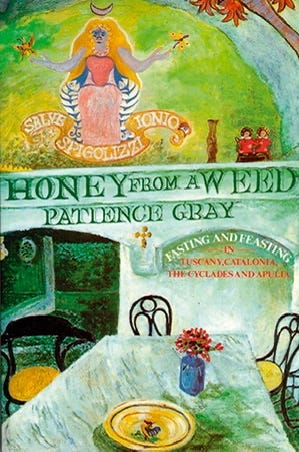



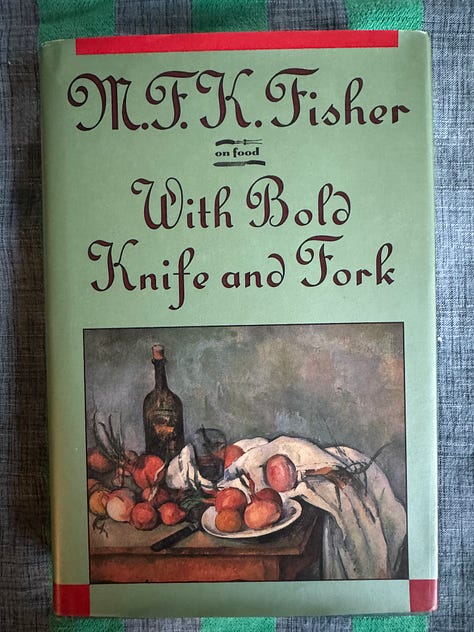
The Alice B. Toklas Cook Book / Alice B. Toklas
There are more than 350 recipes in Alice B. Toklas’ “experimental and adventurous” repertoire, but the juicy bits are in the stories that come with them. Also: “recipes” is a bit of a stretch; more like stream of conscious memory revelations pertaining to specific meals, along with gentle guidance and encouragement. There’s a chapter titled “Cooking for Artists” (striped bass for Picasso) and “Little Known French Dishes Suitable for American and British Kitchens” (answer: mussels, green mayonnaise, chicken in half mourning, and the real right way for French fried potatoes), and a recipe for making hashish fudge (“the food of Paradise—of Baudelaire’s Artificial Paradises”), which, according to Toklas, anyone could whip up on a rainy day. A warning: “Euphoria and brilliant storms of laughter, ecstatic reveries and extensions of one’s personality on several simultaneous planes are to be complacently expected.” Dear God, I love knowing these things.With Bold Knife and Fork / MFK Fisher
MFKF doing what she does best: mixing memoir with recipe writing for a beautifully written journey through a beautifully lived life. John Updike called her our “poet of the appetites,” and W. H. Auden said “I do not know of anyone in the United States who writes better prose.” More well known for her memoir Gastronimical Me, which doesn’t have a single recipe but puts you directly into her frame of mind (“Like most humans, I am hungry...our three basic needs, for food and security and love, are so mixed and mingled and entwined that we cannot straightly think of one without the others. So it happens that when I write of hunger, I am really writing about love and the hunger for it...”). For actual recipes (that you may or may not attempt), With Bold Knife and Fork leans further into the specifics of how, how much, and for how long. In the chapter “Questionable Crumpets and Such,” she writes of milk bread, yeast bread, herb bread and honest bread (“The smell of good bread baking, like the sound of lightly flowing water, is indescribable in its evocation of innocence and delight.”).A Painter’s Kitchen: Recipes from the Kitchen of Georgia O’Keeffe / by Margaret Wood
Compiled by Georgia O’Keeffe’s assistant, Margaret Wood (who was only 24 when she worked for the 90-year-old O’Keeffe), this slim volume of recipes reflects the purity and austerity of O’Keeffe’s approach to just about everything she touches. Her commitment to fresh vegetables and herbs is downright evangelical, and recipe titles are refreshingly/hilariously straightforward: “Waffles,” “Steamed Chicken Soup,” “Millet,” “Fried Flowers.” Because she was an unfussy home chef who cooked straight from her garden, the recipes are extremely brief and surprisingly relevant all these years later. But like the books above, the recipes are secondary in my mind; Each one is introduced with an anecdote or story, providing tender context and a compelling justification for this book’s existence. You can usually snag a used copy for around $10. Her personal recipe box, on the other hand—hand-scrawled recipes on notecards, slips of paper, and hotel stationary—was auctioned off by Sotheby’s a couple years ago for an undisclosed amount. The winner: Yale Library, where you can visit with them in person, if you are so inclined.
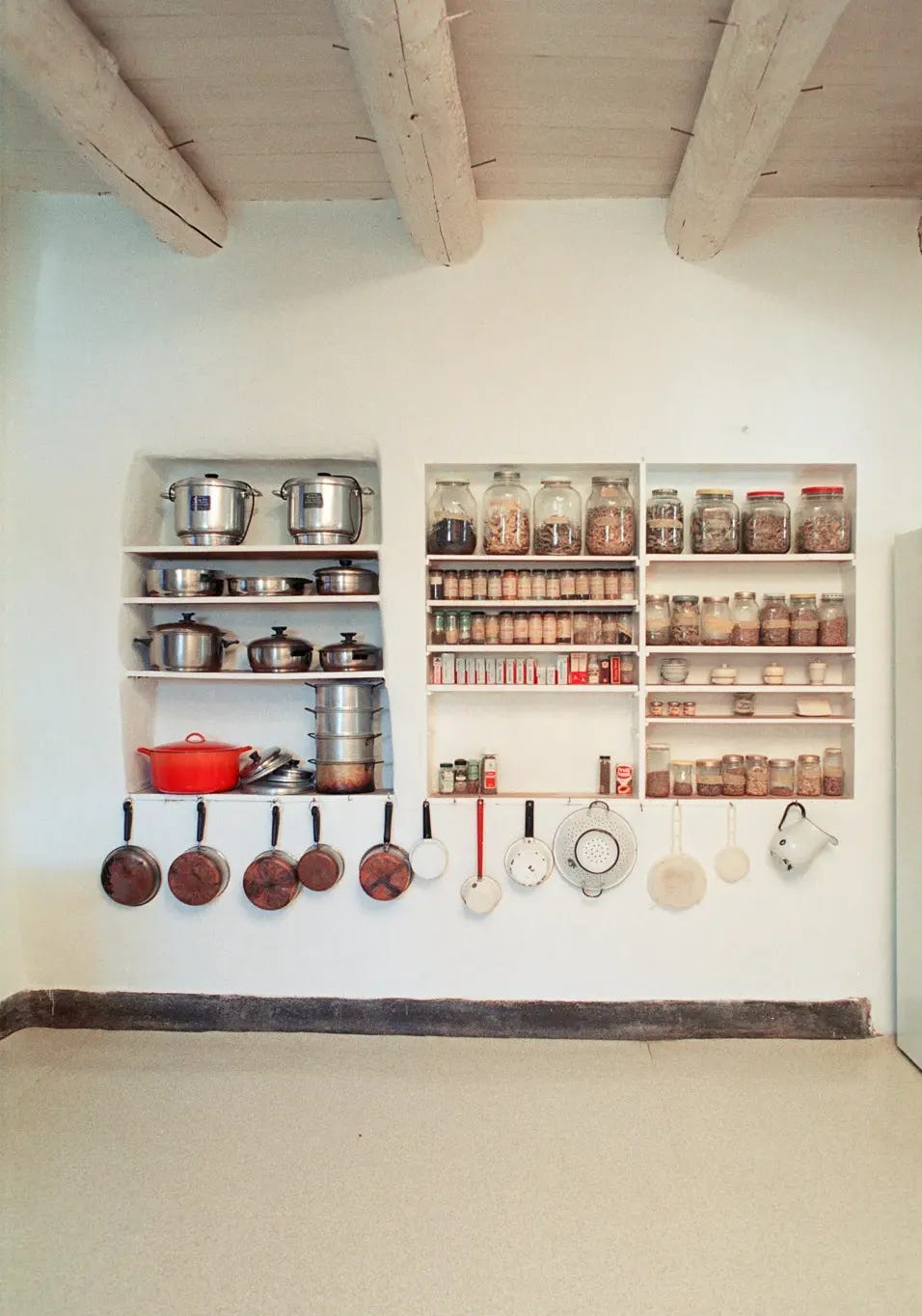
ARTIST KITCHENS: NO LONGER FOR COOKING / ONLY FOR LOOKING
Once upon a time, there was a flurry of labor and use in these beautiful kitchens, now preserved as time capsules of the artists who lived and cooked there. All open to the public as house museums. It’s a near-spiritual experience to stand in O’Keeffe’s perfectly spare kitchen, a balanced masterpiece of aesthetics and practicality, where she canned peppers and hung herbs to dry. Frida Kahlo’s blue and yellow kitchen in Casa Azul, full of her beloved pottery collection, stopped me in my tracks the first time I saw it in person. In Monet’s Giverny house, the kitchen is a temple to blue and white Rouen tiles—floor to ceiling—a kitchen so beautiful, it has a cookbook of its own. Rembrandt’s 17th-century house / now house museum in the center of Amsterdam is a sublime dip back in time, and the kitchen, which was likely an utter backbreaking chore of a scullery, now reads like original inspiration for the entire fleet of Plain English kitchens, from color palette to oversized mantel full of old ceramic vessels.
ON ILLUSTRATIONS
**Honey from a Weed wouldn’t be nearly as charming without the line illustrations by British artist Corrina Sargood. Gray’s ex-daughter-in-law and a magnificently talented painter, illustrator, and maker of vibrant and intricate embroideries, Sargood wrote and illustrated a book of her own, The Village in the Valley, about travel and food in Mexico and Italy a couple years ago.
ON CRAFT
I was tickled to learn that Patience Gray wrote a piece for the Observer titled “Crafts from Obscurity” back in 1960.
“Can you be touched by the delicate pinks, mauves, magentas, poppy tones in woven hangings without first having seen rock roses, wild mallows, oleander, or cornfields ablaze with poppy, in a landscape of scrub and stone?…Once the outside world has broken in with its promise of Lambrettas and refrigerators and hire-purchase, the self-sufficiency of a village culture is finished.” —PG
Happy Thanksgiving. Grateful to you all — thank you for reading!


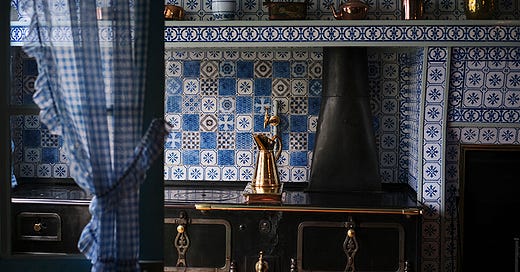

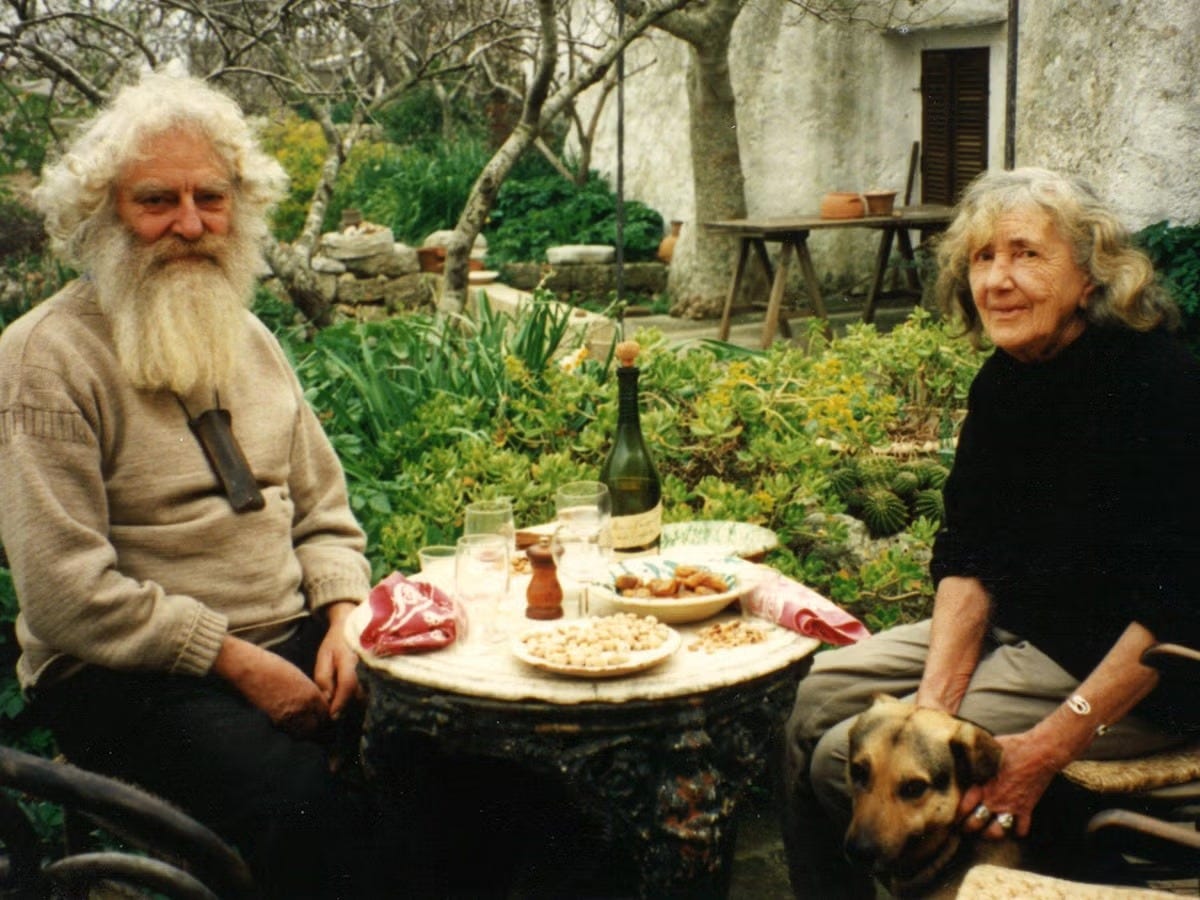

Thanks Megan. I love to read cookbooks. Some to add to my collection.